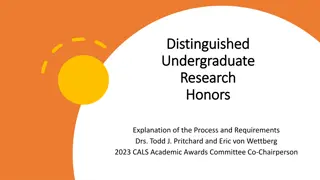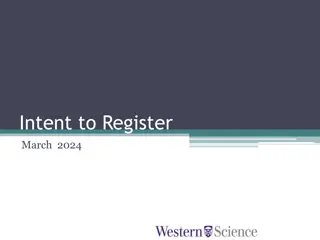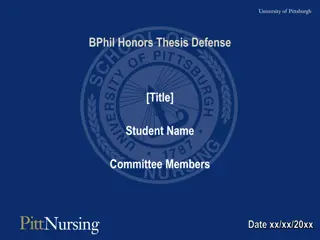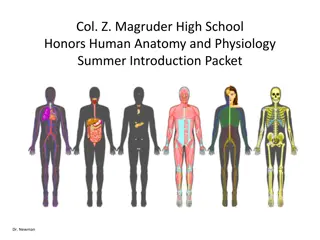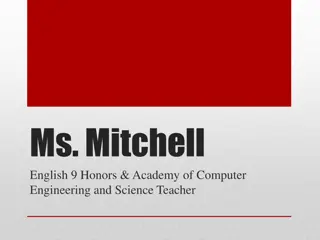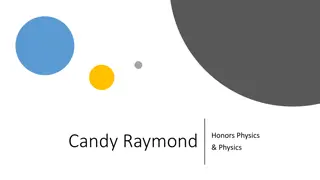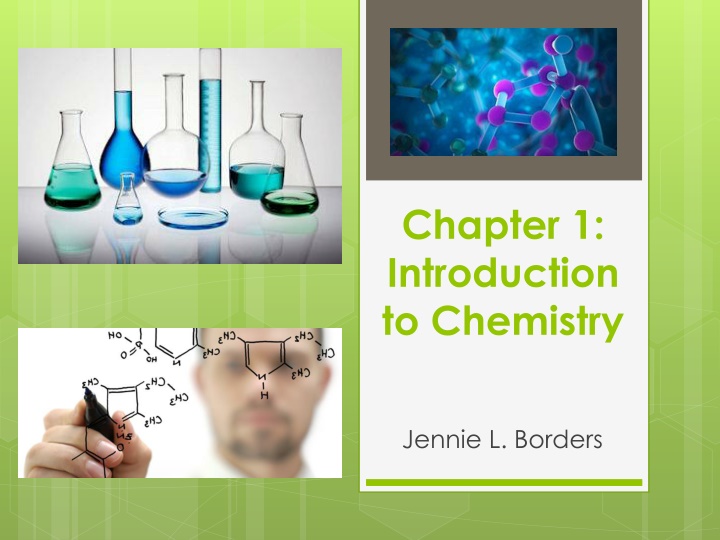
Introduction to Chemistry and its Branches
Explore the fundamentals of chemistry, including the definition of matter, the different branches of chemistry such as organic, inorganic, biochemistry, analytical, and physical chemistry. Understand the significance of chemistry in various applications and historical contributions from alchemists. Test your knowledge with sample problems and assessments.
Download Presentation

Please find below an Image/Link to download the presentation.
The content on the website is provided AS IS for your information and personal use only. It may not be sold, licensed, or shared on other websites without obtaining consent from the author. If you encounter any issues during the download, it is possible that the publisher has removed the file from their server.
You are allowed to download the files provided on this website for personal or commercial use, subject to the condition that they are used lawfully. All files are the property of their respective owners.
The content on the website is provided AS IS for your information and personal use only. It may not be sold, licensed, or shared on other websites without obtaining consent from the author.
E N D
Presentation Transcript
Chapter 1: Introduction to Chemistry Jennie L. Borders
Section 1.1 - Chemistry Matter is anything that has mass and occupies space. Chemistry is the study of the composition of matter and the changes that matter undergoes.
Branches of Chemistry Five traditional areas of study are organic chemistry, inorganic chemistry, biochemistry, analytical chemistry, and physical chemistry. Organic chemistry involves the study of all chemicals containing carbon.
Branches of Chemistry Inorganic chemistry involves the study of chemicals that do not contain carbon. Biochemistry is the study of processes that take place in a living thing.
Branches of Chemistry Analytical chemistry is the study that focuses on the composition of matter. Physical chemistry is the area that deals with the mechanism, the rate, and the energy transfer that occurs when matter undergoes a change.
Sample Problem Which branch of chemistry would the following belong to? A police officer testing a white powder The study of hydrochloric acid in the digestive system Determining the speed with which a reaction takes place The study of glucose (C6H12O6) The study of calcium deposits from hard water
Section 1.1 Assessment Name the five traditional areas into which chemistry can be divided.
Section 1.3 Thinking Like a Scientist Alchemists searched for a way to turn a cheap metal like lead into gold. One element cannot turn into another element by physical or chemical means, so their goal was impossible. They also created elixirs to extend life, but many died by drinking their own potions.
Alchemists Even though alchemists were unsuccessful in creating gold, they developed the tools and techniques for working with chemicals that we still use today.
Scientific Method The scientific method has 5 steps: 1. Ask a question 2. Observe/Research 3. Hypothesis an educated guess based on observations 4. Experiment/Collect Data 5. Conclusion/Analyze Results
Variables The manipulated variable (independent variable) is the variable that you change during an experiment. The responding variable (dependent variable) is the variable that you observe during an experiment. A good experiment only has one manipulated variable.
Theory vs. Law A theory is a well-tested explanation for a broad set of observations. A scientific law is a concise statement that summarizes the results of many observations and experiments. A theory is an attempt to explain why. A law tells what happens. A theory can NEVER be proven to be absolutely correct.
Section 1.3 Assessment Name the 5 steps of the scientific method. What is the difference in a theory and a hypothesis? In Chapter 2, you will learn that matter is neither created nor destroyed in any chemical change. Is this statement a theory or a law? Explain.
Section 1.4 Problem Solving in Chemistry The three steps to solving a numeric word problem are analyze, calculate, and evaluate. Analyze identify the known and unknown Calculate solve the problem Evaluate is your answer reasonable? Always remember to put a unit!!
Section 1.4 Assessment List the three steps for solving numeric problems. There are 3600 seconds in an hour. How many seconds are there in one day? a. Identify the known and unknown. b. Calculate the answer to the problem. c. Evaluate your answer to see if it makes sense.



